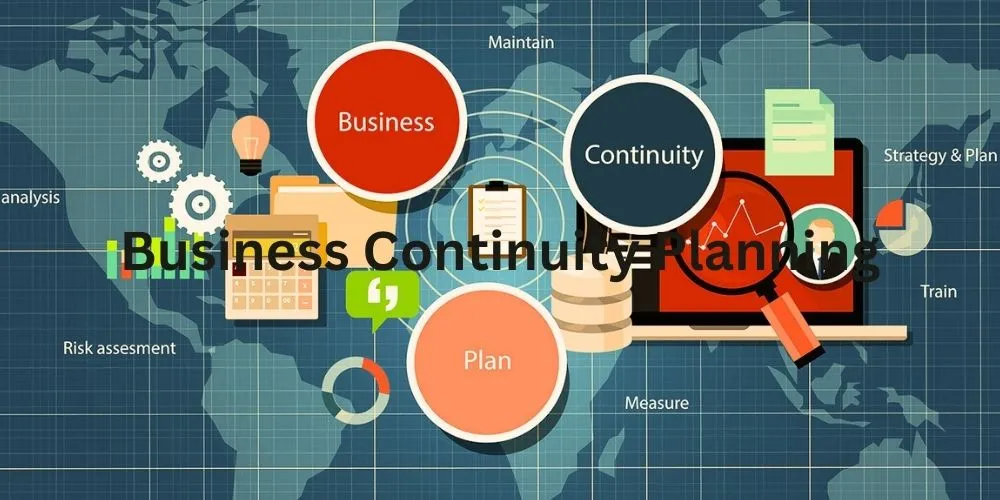Business Continuity Planning (BCP) stands as a linchpin in enterprise resilience. It is a comprehensive framework to ensure that organizations can continue their critical operations, provide essential services, and swiftly recover from disruptions. This article delves into the multifaceted domain of Business Continuity Planning, exploring its fundamental principles, diverse methodologies, key advantages, notable applications, and the challenges it addresses within the dynamic landscape of modern business operations.
Unveiling Business Continuity Planning
Business Continuity Planning is a strategic approach that aims to identify potential threats, assess their impact on essential business functions, and formulate proactive strategies to maintain operations in the face of disruptions. The primary objective is to safeguard an organization’s critical processes, data, and assets, ensuring continuity in the delivery of products or services, even during unforeseen events.
Key Components of Business Continuity Planning
Understanding the key components of Business Continuity Planning is essential for comprehending its comprehensive nature and impact:
- Risk Assessment: The planning process often begins with a thorough risk assessment, identifying potential threats such as natural disasters, cyber-attacks, or pandemics. This evaluation provides a foundation for developing strategies to mitigate and manage these risks effectively.
- Business Impact Analysis (BIA): BIA involves analyzing the potential impact of disruptions on various business functions. This step helps prioritize critical processes, enabling organizations to allocate resources strategically and focus on maintaining essential operations.
- Emergency Response Planning: Establishing clear protocols for emergency response is crucial. It includes defining roles and responsibilities, establishing communication channels, and ensuring employees are well-trained to respond effectively during a crisis.
Methodologies of Business Continuity Planning
Business Continuity Planning employs various methodologies to create resilient strategies tailored to an organization’s unique needs:
- Business Continuity Management System (BCMS): BCMS provides a structured framework for developing, implementing, and maintaining business continuity processes. It involves establishing policies, conducting risk assessments, and regularly testing and updating continuity plans.
- Tabletop Exercises: Tabletop exercises simulate various disaster scenarios, allowing stakeholders to walk through the steps of the Business Continuity Plan. These exercises help identify gaps in the plan, refine response strategies, and ensure the readiness of key personnel.
- Collaborative Planning: Involving key stakeholders from different departments in the planning process enhances the plan’s effectiveness. Collaborative planning ensures that diverse perspectives are considered, fostering a more comprehensive and resilient approach.
Advantages of Business Continuity Planning
The adoption of Business Continuity Planning brings forth a multitude of advantages, fortifying the overall resilience and survivability of organizations:
Proactive Risk Mitigation
One of the primary advantages of Business Continuity Planning is its role in proactive risk mitigation. By identifying potential risks and formulating strategies to address them, organizations can minimize the impact of disruptions and maintain essential functions during adverse events.
Regulatory Compliance Assurance
Business Continuity Planning is instrumental in ensuring regulatory compliance. Many industries have specific regulations that mandate organizations to have robust continuity plans. Compliance with these regulations avoids legal consequences and enhances an organization’s reputation.
Enhanced Incident Response Preparedness
Business Continuity Planning contributes to improved incident response preparedness. Organizations can refine and enhance their capabilities by identifying weaknesses in incident response plans to mitigate the impact of disruptions swiftly. This heightened preparedness ensures a swift and effective response to potential crises.
Stakeholder Confidence and Trust
Regular Business Continuity Planning enhances stakeholder confidence and trust. Demonstrating a commitment to resilience reassures clients, partners, and investors that the organization is proactive in safeguarding critical operations. Building and maintaining trust is crucial for sustained success and positive relationships.
Applications of Business Continuity Planning
Business Continuity Planning finds applications across diverse industries and organizational structures, influencing how organizations assess and strengthen their resilience:
Information Technology and Data Management
In information technology, Business Continuity Planning is critical for ensuring the availability and integrity of data and systems. IT organizations use continuity plans to address potential disruptions, including data breaches, cyberattacks, or system failures.
Supply Chain Management
Business continuity planning is indispensable for organizations reliant on complex supply chains. It involves assessing the supply chain’s resilience, identifying potential vulnerabilities, and formulating strategies to ensure the uninterrupted flow of goods and services.
Healthcare and Emergency Services
Business Continuity Planning is crucial in the healthcare sector, where continuous service delivery is paramount. Hospitals and emergency services use continuity plans to address challenges such as natural disasters, pandemics, or other events that could impact their ability to provide critical care.
Financial Institutions and Banking Systems
Business Continuity Planning is vital for safeguarding essential financial services in the financial sector. Banks and financial institutions use continuity plans to address potential disruptions, ensuring the continuous availability of banking services, even during crises.
Challenges in Business Continuity Planning
While the advantages are evident, the practice of Business Continuity Planning faces its own set of challenges. Addressing these challenges is crucial for realizing the full potential of Business Continuity Planning efforts:
Evolving Threat Landscape
The dynamic nature of the threat landscape poses challenges for Business Continuity Planning. New and sophisticated threats continually emerge, requiring organizations to adapt their plans to stay ahead of potential risks. The ability to anticipate and respond to evolving threats is central to the effectiveness of Business Continuity Planning.
Resource Intensiveness
Conducting thorough Business Continuity Planning can be resource-intensive, requiring time, skilled personnel, and specialized tools. Organizations may face challenges in allocating the necessary resources for comprehensive planning. Resource constraints can impact the frequency and depth of planning efforts, potentially leaving vulnerabilities unaddressed.
Organizational Complexity
The complexity of modern organizations poses challenges for Business Continuity Planning. Large and interconnected enterprises may have diverse operations, making it challenging to create plans that address all potential disruptions comprehensively.
Human Factors and Employee Training
Human factors, including the need for employee awareness and training, pose challenges for Business Continuity Planning. Ensuring employees are familiar with the continuity plan and know their roles during a crisis is crucial for successful execution.
Future Trends in Business Continuity Planning
As technology continues to evolve, future trends in Business Continuity Planning point toward advancements that further enhance its capabilities:
Integration of Technology Solutions
Integrating advanced technology solutions, including artificial intelligence and predictive analytics, is a growing trend in Business Continuity Planning. These technologies can provide real-time insights, automate certain aspects of the planning process, and enhance predictive capabilities.
Enhanced Data Analytics for Risk Assessment
Advancements in data analytics enable organizations to conduct more sophisticated risk assessments. Analyzing vast datasets allows organizations to identify potential threats more accurately and tailor their continuity plans to address specific risks.
Cloud-Based Business Continuity Solutions
The adoption of cloud-based solutions for Business Continuity Planning is on the rise. Cloud platforms offer scalability, flexibility, and accessibility, allowing organizations to store and access their continuity plans securely.
Scenario-Based Planning and Simulations
Scenario-based planning and simulations are gaining prominence. These exercises involve simulating specific crisis scenarios to test the effectiveness of continuity plans and identify areas for improvement.
Conclusion
Business continuity planning is a pivotal element in an organization’s resilience strategy. It provides a structured and proactive approach to navigating disruptions and ensuring the continuity of critical operations. Its role in risk mitigation, compliance assurance, and incident response preparedness is indispensable in an era when unforeseen events can significantly impact business operations.
While challenges persist, ongoing advancements and future trends indicate a dynamic and promising future for Business Continuity Planning, with applications extending into new frontiers of technology, collaboration, and data analytics. The responsibility to implement and evolve Business Continuity Planning practices rests on organizations, urging them to embrace innovative approaches for a resilient and adaptive future.










